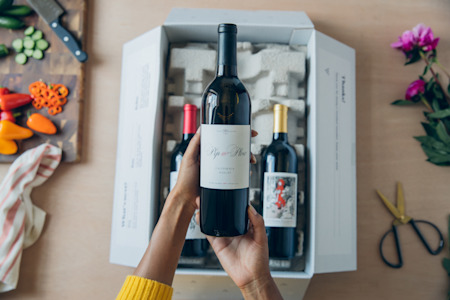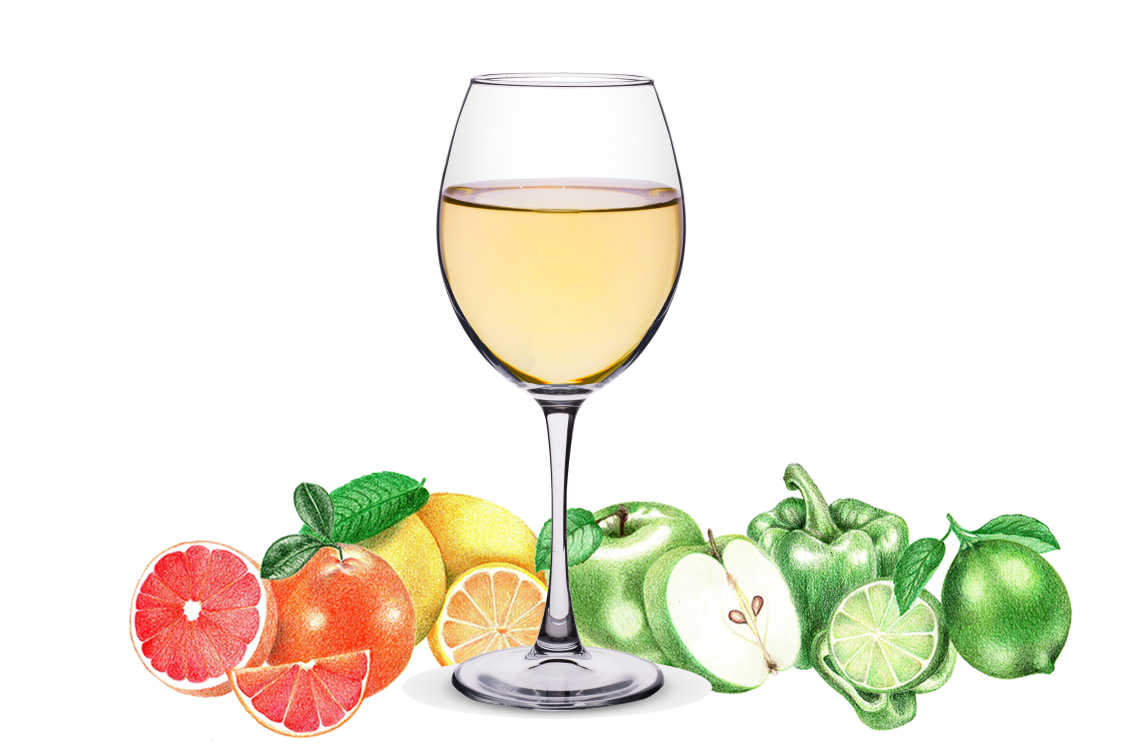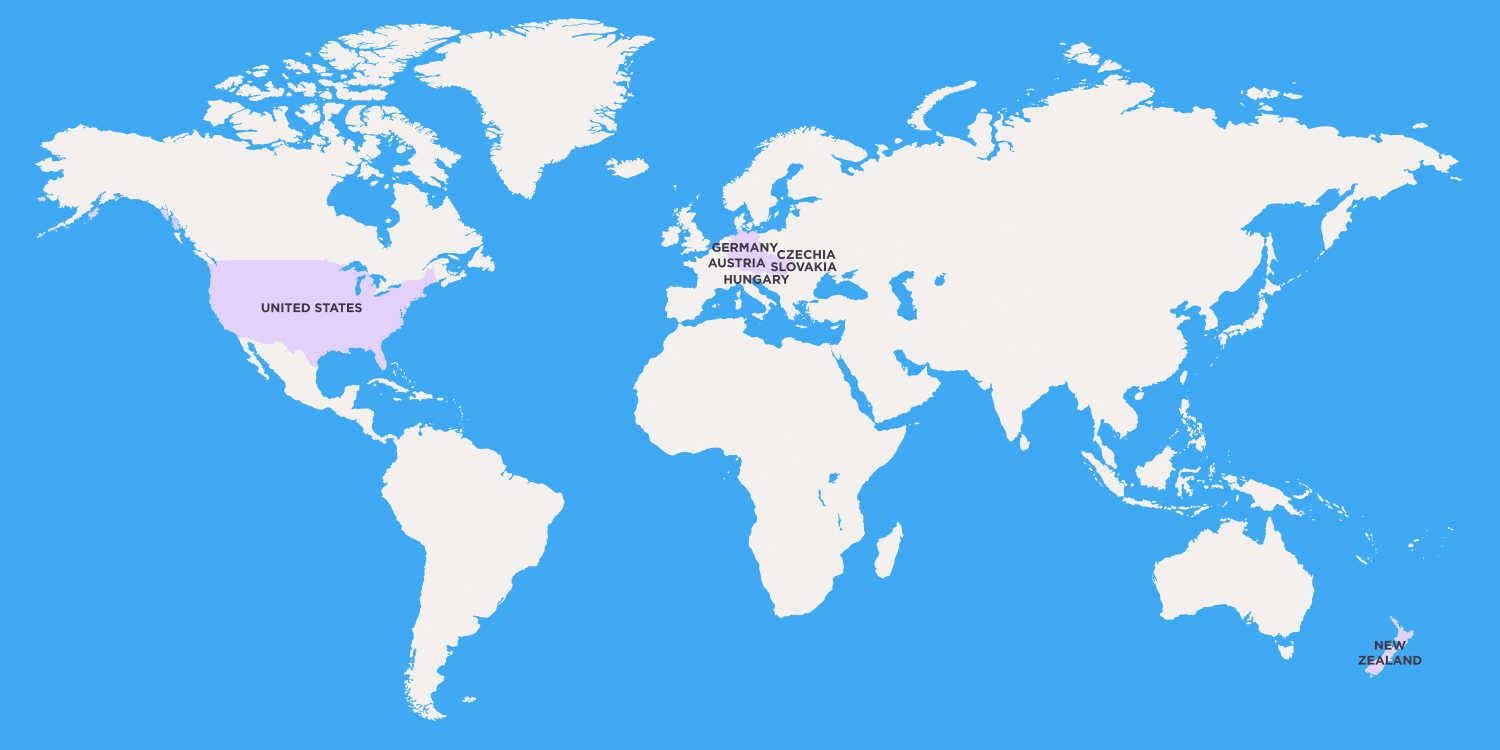Grüner Veltliner
Explore Austria's signature wine in our ultimate guide
Simply put, Grüner Veltliner and Austria are synonymous in the wine world. The grape is Austria's signature white wine, and the country's most planted grape variety.
The most well-known style of Grüner is light, crisp, and citrusy, but the grape is actually incredibly versatile, and can make versions that are much richer, fuller and more complex. The best can even rival complex Rieslings!
Worldwide, the overwhelming majority of Grüner Veltliner plantings are found in Austria, in appellations like Kamptal, Kremstal and Wachau, but it can also be found in other parts of Eastern Europe, and has even traveled to certain parts of the United States.

Take Our Quiz Today
Get award-winning delicious wines from all over the world shipped straight to your door. Take the quiz to get the perfect pairings for your holiday season.
Take The Quiz TodayIN THIS ARTICLE:
Want personalized wines?
Get your first box of wines for $44.95 + free shipping.

History of Grüner Veltliner
Grüner Veltliner is an old grape that is thought to date back thousands of years, even though the first official mention didn't come until the 1800s. The grape is sometimes difficult to work with, and it took advances in scientific and systematic winemaking to produce good versions of the wine.
With a rapid expansion of plantings in the 1950s, it quickly became the country's most planted grape. It grows today across middle-Europe and in the United States as well as Australia.
What does Grüner Veltliner Taste Like?
Grüner Veltliner can be made in a range of styles. First there's the light- to medium-bodied, crisp and easy-drinking style, which emphasizes fruits like lemon, lime, green apple and grapefruit. These wines can have vegetal notes, like dill or green bell pepper. The other style—typically in higher quality wines or wines from warmer sites—is rather full-bodied and spicy, with rich fruits like apricot, peach, baked apple and pineapple. These are often complemented by details of honey, ginger and roasted nuts.
No matter the style, the grape's signature is a note of white pepper and a pronounced minerality.
Grüner Veltliner Characteristics
Grüner Veltliner ripens quite late in the season, and needs a good amount of sunshine to show its best. It doesn't mind a healthy amount of rainfall throughout the year.
Grüner is a very productive grape, so it needs careful yield control to achieve adequate concentration in the final wines. There is somewhat of a consensus that loess soils are the best for the white grape to thrive, but it also does very well in limestone, clay, schist and granite. Wherever it grows, Grüner has a remarkable ability to reflect terroir.
The large majority of Grüner Veltliner does not age in new oak; winemakers opt for stainless steel vats or large old oak casks for fermenting and aging, which preserves the freshness and vibrancy of the fruit. Grüner wines have very high acidity, and depending on the style, have low to moderate alcohol levels.
The quality-minded Wachau appellation differentiates itself with a classification system to help consumers identify its styles, which measures the sugar content of the berries at harvest. Most Grüners are fermented dry or almost dry, so this system doesn't so much indicate sweetness levels as it does ripeness and alcohol content. (Remember, the more sugar in a grape, the more resulting alcohol.) The three levels are, from low to high sugar: Steinfeder, for wines up to 11.5% alcohol, Federspiel, for wines between 11.5% and 12.5%, and Smaragd, for wines 12.% and above.
Grüner Veltliner is also used for the base wine of sekt, a sparkling wine made in Austria and Germany.
Grüner Veltliner Nutritional Facts
The nutritional value of Grüner Veltliner varies depending on two factors: alcohol and sugar. Grüner Veltliner is made in a range of styles, in which alcohol and sugar fluctuate. If you're looking for a lower calorie wine, go for the light-bodied, zesty Grüners that are low in alcohol or labeled Steinfeder. In riper styles, like Federspiel or Smaragd bottlings in Wachau, there will be more alcohol, therefore more sugar and calories. The more sugar there is in a wine, the more carbohydrates will be present.
How to Serve and Store Grüner Veltliner
Again, serving and storing guidelines will depend on style. If you have a light-bodied, easy-drinking Grüner, you'll want to drink it very shortly after you purchased it. These wines are meant to be drunk young, when the acidity and fruity flavors are vibrant. However, if you have a higher-end Grüner, like a Smaragd bottling, you might want to put it down for a few years or up to a decade. Some people say that the cream of the crop of Grüner Veltliner, when mature and showing well, can resemble white Burgundy.
If you're storing Grüner for a long period of time, remember to have the bottle lying on its side so the cork doesn't dry out, and keep it in a cool, dry room with little natural light.
The recommended serving temperature for white wine is 45 to 55 degrees Fahrenheit. For light-bodied, drink-now styles of Grüner, you might want to have them on the cooler side of that spectrum, perhaps on a hot summer day. For richer styles, it might be best to serve them a little warmer, to let the bold flavors show off properly. However, as always, this all comes down to personal preference.
What to Pair with Grüner Veltliner
While there are basic guides to pairing food and wine, the most imporant rule is to drink what you like with the food that you like!
If you do want to pair it think of what style you have in your glass. For the easy-drinking sippers that have more citrusy fruit and vegetal accents, focus on lighter fare. Many types of fish, from delicate white fish to fleshy salmon and tuna, pair excellently with Grüner. For richer styles of Grüner, don't shy away from meat. A classic pairing for this Austrian wine is Wiener schnitzel.
Grüner Veltliner Wine Regions Around the World
Austria:
The large majority of Grüner in Austria is grown in the northeastern Niederösterreich region, also known as Lower Austria, and in the winegrowing areas around Vienna.
The northeast of Niederösterreich is the main source for simple, drink-now styles of Grüner made in high quantities, typically coming from the Weinviertel appellation and its clay soils. Farther south and west of there, but to the northwest of Vienna, is where most of the serious stuff is made, in the areas surrounding the Danube River.
Wachau is considered the most prestigious appellation in Austria, and operates outside the Districtus Austriae Controllatus (DAC) system. It is defined by its terraced vineyards reaching high above the Danube, which are typically south-facing, and the prized loess soils Grüner does so well in. Wachau has strikingly wide diurnal shifts in temperature.
There are loess soils in neighboring Kremstal too, mostly in its inland vineyards; closer to the river banks, you'll find limestone and clay. It's a little warmer in Kremstal than in Wachau. Kamptal has a mix of mostly loess and clay, with some sand and gravel, and also has big diurnal swings. Here, Grüner does best in lower-lying vineyards. Farther down the river in the southeast, Wagram is also a notable area for Grüner, dominated by loess soils.
Important producers to know in Austria include F.X. Pichler, Hirsch, Knoll, Nigl, Rudi Pichler and Schloss Gobelsburg.
Elsewhere in Europe:
Grüner has traveled a bit, but not very far. It is grown in Austria's bordering countries like the Czech Republic and Slovakia, under the name Veltlinske Zelené, in Slovenia as Zeleni Vetlinac, and in Hungary as Zöldveltelini. There are also some plantings in Germany's Rheinhessen region, and in the Trentino-Alto Adige region in the northeast of Italy.
United States:
In the U.S., perhaps the biggest success story for Grüner Veltliner has been in New York's Finger Lakes region, in the very north of the state, close to Canada. The area's moderating lake effect, both in winter and in summer, has proved quite a good climate for Grüner. Riesling is still the top grape here, but many winemakers have taken Grüner under their wing as well.
A handful of producers make Grüner in cooler pockets of California, like Santa Barbara, and Oregon.
New Zealand:
In New Zealand, there are some plantings of Grüner, notably in Central Otago, which is better known for its Pinot Noir.
IN THIS ARTICLE
Want personalized wines?
Get your first box of wines for $44.95 + free shipping.


WinePrint™ by Firstleaf
Are you looking to learn more about your wine preferences? Check out our Wine Print for an in-depth look at your personal tasting profile. Discover your favorite wines, varietals, regions, and tasting notes and get personalized recommendations wherever you are.
Learn More
